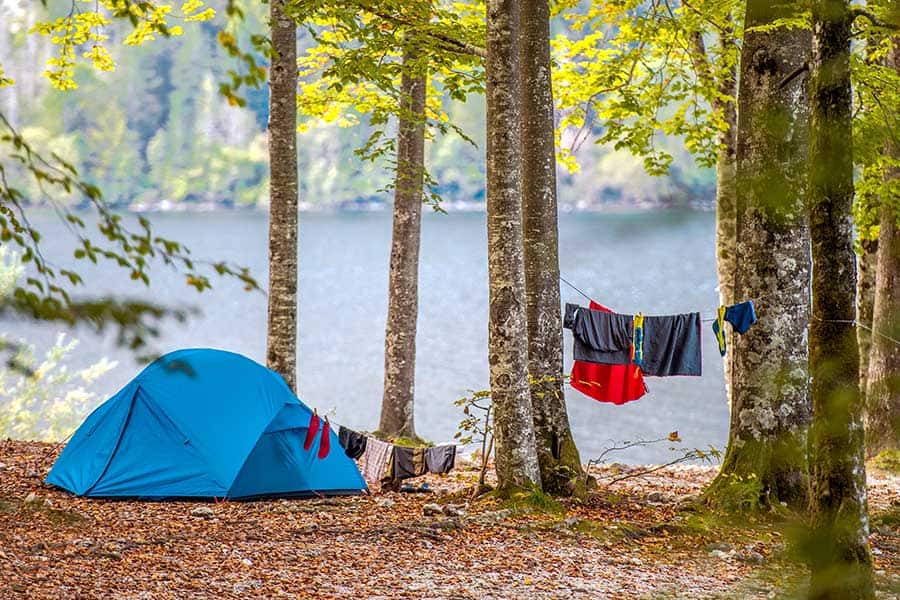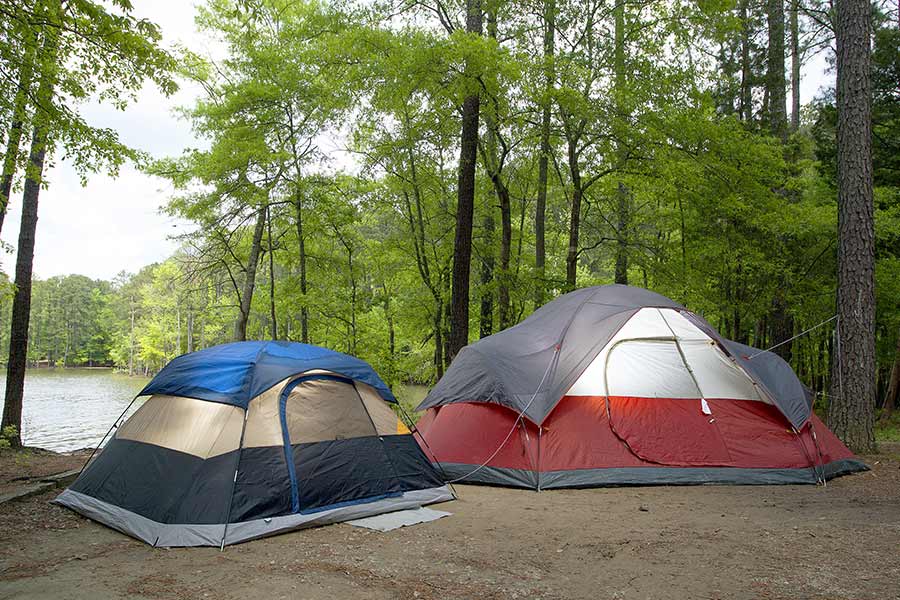
Tent camping is one of the most popular outdoor activities because it allows you to explore nature while still providing shelter and protection. Of course, different materials, sizes, and designs all play a role in how well your chosen tent regulates temperature – but did you know that even color plays an important part? So what color tent is the coolest?
Light-colored tents like white or light yellow are cooler. They are better for warm climates due to their reflective properties, while darker colors make good choices in colder weather for absorbing more heat from the sun.
With so many options, it can be hard to know which one will work best for your needs. So, we’ll explore some of the benefits and drawbacks of different colored tents so that you can decide which one is right for you.
Selecting A Tent Color
Tents provide a great way to explore nature without having to sacrifice comfort. With so many choices in terms of style, color, and size – it’s important to choose the option that best fits your needs.
Let’s look at which tent color can keep you the coolest and how different colors can affect temperature regulation both functionally and aesthetically.
Dark colors absorb more heat, making them hot and uncomfortable in higher temperatures. On the other hand, lighter colors like white reflect heat away from your tent, keeping you cooler and more comfortable while enjoying nature.

Factors Influencing Temperature Regulating Ability
Design, material, and weather conditions all have a significant impact on how well a tent can regulate temperatures inside.
But specific colors can also be beneficial when it comes to cooling down or heating up the inside environment – depending on which shade you pick. For example, darker-colored tents absorb more heat from the sun’s rays, while lighter ones reflect sunlight better than their darker counterparts.
Popular Colors and Their Aesthetic Benefits
When it comes to choosing a color for your tent, there are many options available that offer both aesthetic appeal and functional features, such as temperature-regulating ability.
Neutral tones like gray, brown, and olive green offer subtle yet stylish touches that won’t show dirt or dust easily – perfect for those who plan on using their tents multiple times.
By contrast, brighter hues like yellow, orange, or red provide eye-catching details that are great for social campers who want their setup to stand out from others!
Factors That Affect Temperature
Tent camping is one of the most popular outdoor activities for families, as it allows for exploring nature while still providing shelter and protection. As mentioned earlier, different materials, sizes, colors, and designs all play a role in how well your chosen tent regulates temperature.

Design and material of the tent
When camping outdoors, temperature significantly affects how comfortable your stay is. However, the ability of a tent to stay cool depends on the design and material used to create it.
Different fabrics and coatings determine how effective the temperature-regulating functions are. For example, breathable nylon fabric allows air circulation within the tent through small weaving gaps, which helps in temperature regulation.
Conversely, synthetic fabric with layers of insulating technology helps contain warmth during cold weather. These factors should be considered while selecting a tent style, size, and material to get the most out of temperature regulation throughout your stay outside.
Van Camping Life Tip: Arrive at your campsite early. Setting up camp will be much easier when you have daylight to see what you are doing.
Other Posts of Interest
- Are There Bears In Joshua Tree National Park?
- Camping With Blankets Instead Of Sleeping Bags: Here’s How
- 11 Awesome Van Camping Destinations In The Florida Panhandle
- Can You Take Your Camper to Disney World?
Weather conditions
One of the most important factors to consider when camping is weather conditions and their effect on a tent’s temperature-regulating ability.
The tent material, size, and shape all play a role in how well it will retain warmth when temperatures dip low. If the tent is made of a thin material such as polyester or nylon, it will not be able to do a great job of insulating against colder climates.
Purchasing a reflective shade cloth or an emergency survival blanket that you can use to cover your tent will also help deflect heat off your tent, keeping it cooler.

Find some shade. Shade is beneficial in keeping temperatures inside a tent cool, as it helps block out direct sunlight. Darker tents will retain more heat in the shade, while lighter tents will remain cooler.
Additionally, having some ventilation openings can help keep air circulating and temperatures regulated inside the tent.
Finally, tent size and shape can also impact how well it maintains your desired temperatures; larger tents with rounded corners allow the air to move around better than smaller ones with square corners.
Ultimately, understanding weather conditions and selecting a tent accordingly are key components of owning a tent that stays cooler.
Looking for Anther Option to Stay Cool in a Tent?
Keeping cool in a tent can be tricky, but with the Ohnana Tent, it’s made easy. The special aluminum coating on the tent reflects up to 90% of sunlight, meaning that infrared light from the sun doesn’t get absorbed into the tent and heat it up.
Additionally, airgaps and the Ohnana Fan help to reduce any extra heat generated by occupants. Thanks to this technology, the Ohnana Tent stays much cooler than conventional tents. While regular tents can reach up to 41ºC or 105ºF under direct sunlight, the Ohnana keeps temperatures at a comfortable 27ºC or 80ºF.
Cool Colors for Cooler Tents
Whether you’re looking for something that blends in with its surroundings or makes a statement — knowing which tent color will keep you cool is vital in picking out the perfect fit no matter what weather conditions come your way.
Generally speaking, lighter shades are better suited for hot climates due to their reflective properties. In contrast, dark ones may provide some relief during colder weather by absorbing more heat from sunlight.





